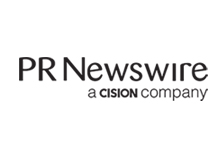Four Considerations for Connected Health Strategies in 2018
DURHAM, N.C., Jan. 31, 2018 /PRNewswire/ -- Since 2010, digital health investments have increased from $1.2 billion to over $9 billion in 2016 -- a 650% difference.
With the transition from episodic, in-hospital care to continuous management in the home, providers and payers must identify the strategies to create meaningful, measurable change for their patients. As resources continue to be strained in the value-based care shift, the only way to ensure greater output with diminishing resources is through the scaled use of technology.
READ THE WHITE PAPER: THE 2018 STATE OF CONNECTED HEALTH
"It's likely that in the coming year, we will see a lot of moving plates. From the growth of value-based care to the increased consumerization of healthcare, providers need to devise a strategy that integrates the best tools and data to scale for future change," said Drew Schiller, CEO of Validic, the leading provider of data connectivity solutions for healthcare.
In its new white paper, Validic identified several action points leaders should consider when planning their 2018 digital health strategy:
1. Develop the infrastructure and organizational processes to support remote
monitoring for chronic disease management. A targeted remote monitoring
program can be impactful in managing chronic conditions for patients
deemed at-risk, demonstrating benefits in improving patient outcomes and
lowering costs. The aging population in the U.S. continues to grow, with
80% currently suffering from a chronic condition. This population will
require more care in the near future, and remote monitoring offers a
demonstrated solution to better support patients and clinicians.
2. Adopt alternative payment models that embrace value-based care.
Accountable Care Organizations (ACOs) now cover nearly 10% of the U.S.
population, or about 32.4 million lives. New payment models are becoming
increasingly common and, as a result, are driving more RPM programming.
The unbundling of CPT code 99091 allows QPP-participating providers to be
reimbursed separately for their time spent on the collection and
interpretation of patient-generated health data (PGHD). As new policies
encourage the integration and use of PGHD in remote monitoring, providers
will benefit from learning about and adopting new payment models that
incentivize and support such programs.
3. Use digital tools strategically to reduce the burden on physicians. By
2025, the U.S. is expected to experience a shortage of between 61,700 and
94,700 doctors. This shortage, compounded by significant physician
burnout, calls for action. The use of well-integrated remote monitoring
and digital health technologies can reduce the time a physician needs to
spend with patients in-person and help them focus on providing timely,
quality care to those most in need.
4. Seek methods of care delivery and communication that improve patient
satisfaction. In a recent survey, 88% of patients said they would switch
providers "without hesitation" if they were not satisfied with the level
of care they receive. With urgent care centers and virtual physicians on
the rise, the competition for patients is also growing -- pushing more
traditional providers to offer improved access and virtual care options.
Remote monitoring, telehealth, and a number of other digital health
solutions allow providers the ability to improve patient satisfaction and
retention. Today, these programs are competitive advantages. However,
data indicates that in five years, these programs will be the status quo
for health systems.
The momentum of digital health is showing no signs of slowing. To learn more about the best strategic approaches to these industry trends and how to take advantage of digital health and patient data, read the new white paper: "The 2018 State of Connected Health."
About Validic
Validic guides healthcare organizations through the technical complexities associated with accessing and operationalizing patient-generated health data. Validic's scalable, secure solutions help you improve operational efficiency and patient outcomes by delivering personal health data from over 400 home health devices seamlessly into your existing clinical workflows. To find out how healthcare is innovating to create more data-driven and integrative healthcare experiences, visit validic.com or follow Validic on Twitter at @validic.
Contact:
Becka Brown
Becka.brown@validic.com
984-999-0574
View original content with multimedia:http://www.prnewswire.com/news-releases/four-considerations-for-connected-health-strategies-in-2018-300591188.html
SOURCE Validic




